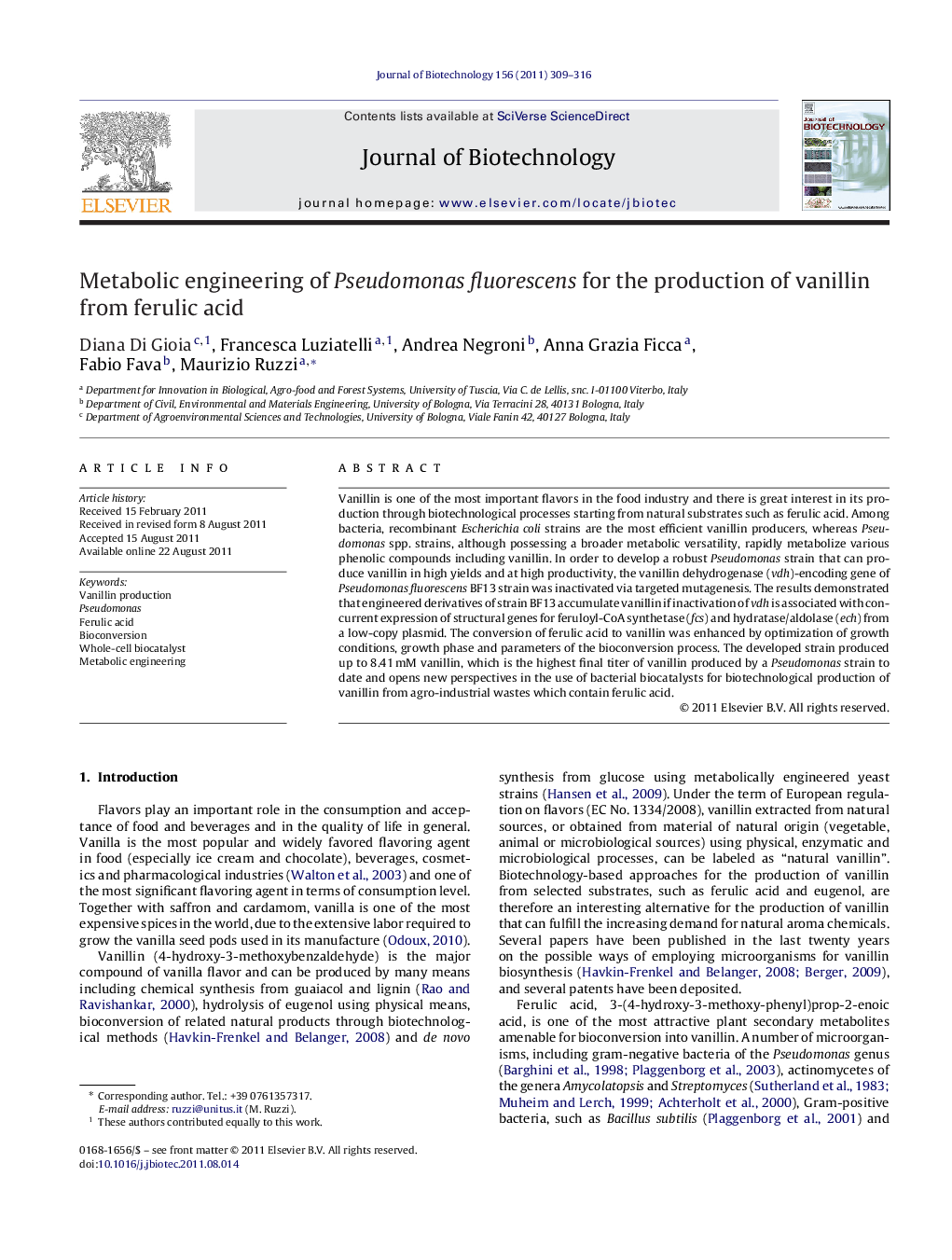| Article ID | Journal | Published Year | Pages | File Type |
|---|---|---|---|---|
| 23811 | Journal of Biotechnology | 2011 | 8 Pages |
Vanillin is one of the most important flavors in the food industry and there is great interest in its production through biotechnological processes starting from natural substrates such as ferulic acid. Among bacteria, recombinant Escherichia coli strains are the most efficient vanillin producers, whereas Pseudomonas spp. strains, although possessing a broader metabolic versatility, rapidly metabolize various phenolic compounds including vanillin. In order to develop a robust Pseudomonas strain that can produce vanillin in high yields and at high productivity, the vanillin dehydrogenase (vdh)-encoding gene of Pseudomonas fluorescens BF13 strain was inactivated via targeted mutagenesis. The results demonstrated that engineered derivatives of strain BF13 accumulate vanillin if inactivation of vdh is associated with concurrent expression of structural genes for feruloyl-CoA synthetase (fcs) and hydratase/aldolase (ech) from a low-copy plasmid. The conversion of ferulic acid to vanillin was enhanced by optimization of growth conditions, growth phase and parameters of the bioconversion process. The developed strain produced up to 8.41 mM vanillin, which is the highest final titer of vanillin produced by a Pseudomonas strain to date and opens new perspectives in the use of bacterial biocatalysts for biotechnological production of vanillin from agro-industrial wastes which contain ferulic acid.
► We developed a new Pseudomonas-based platform for the biosynthesis of vanillin from ferulic acid. ► Effective strategy applicable to other bioprocesses which involve conversion of phenylpropenoids into CoA-derivatives. ► The first study on high-rate vanillin production by Pseudomonas strains. ► Vanillin production using resting cells of this novel strain is not accompanied by the formation of toxic by-products.
